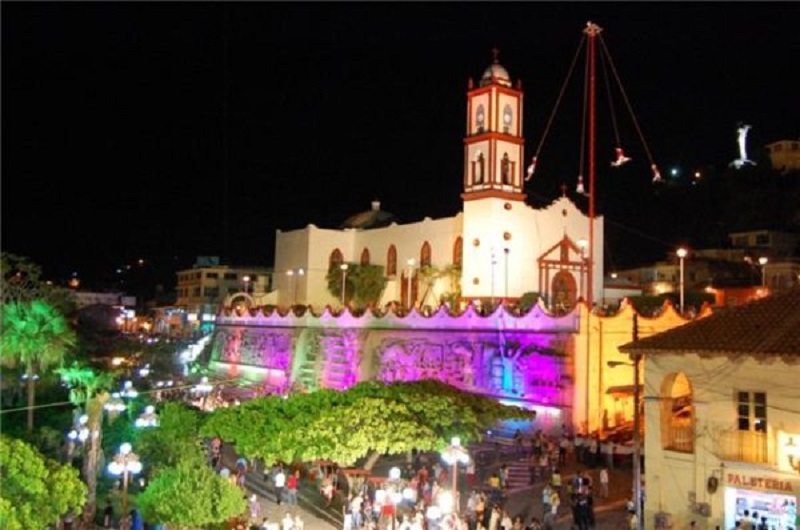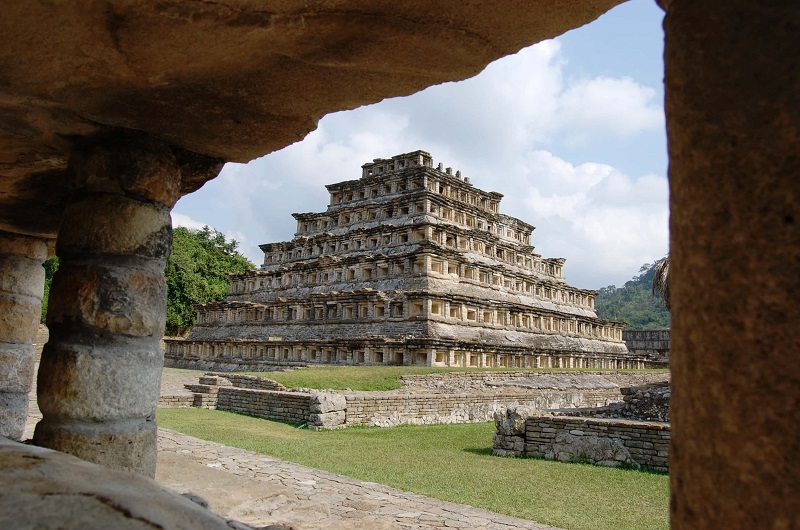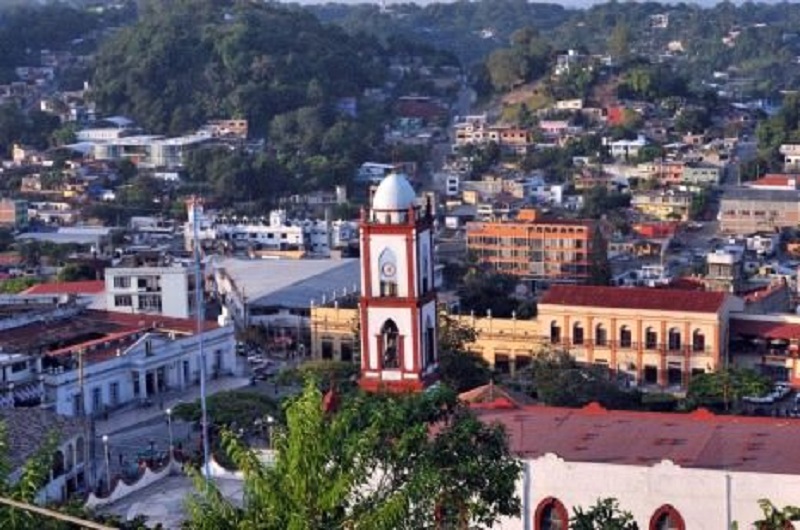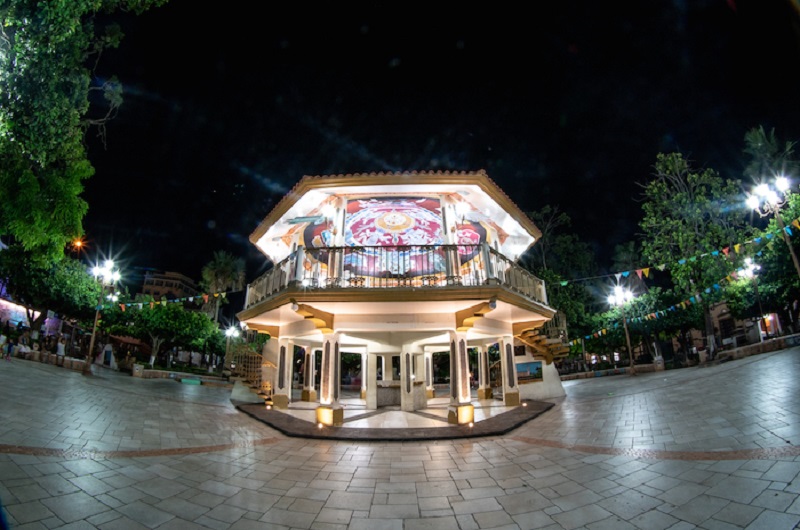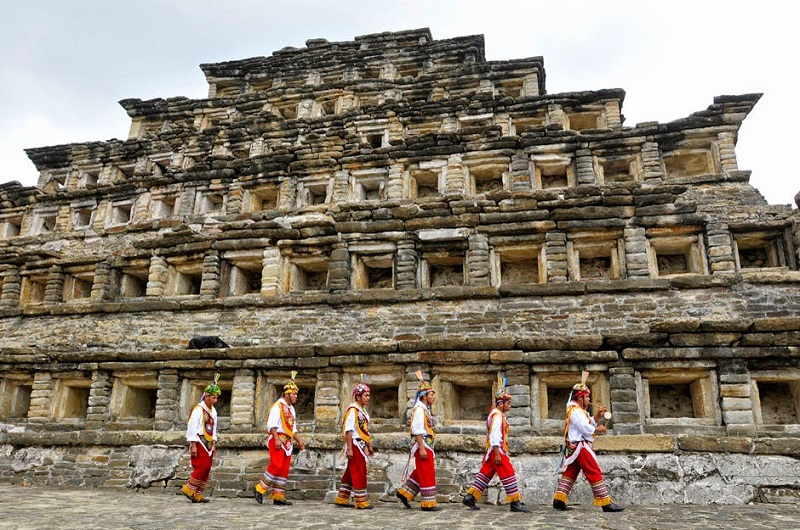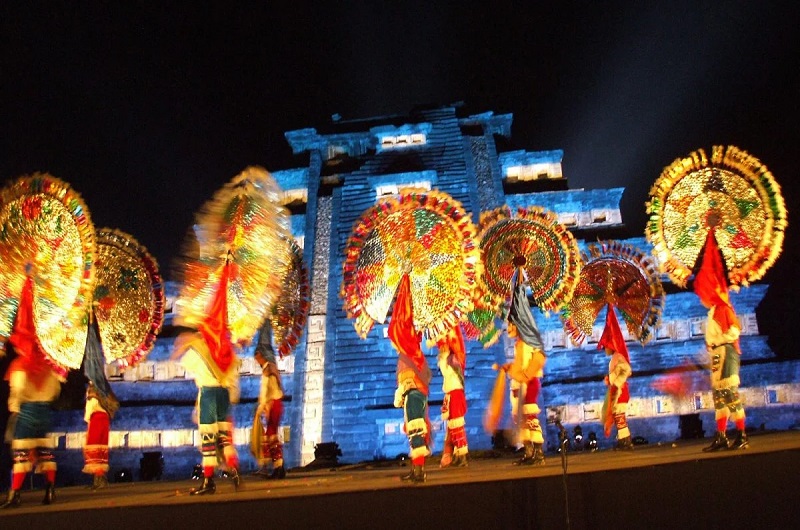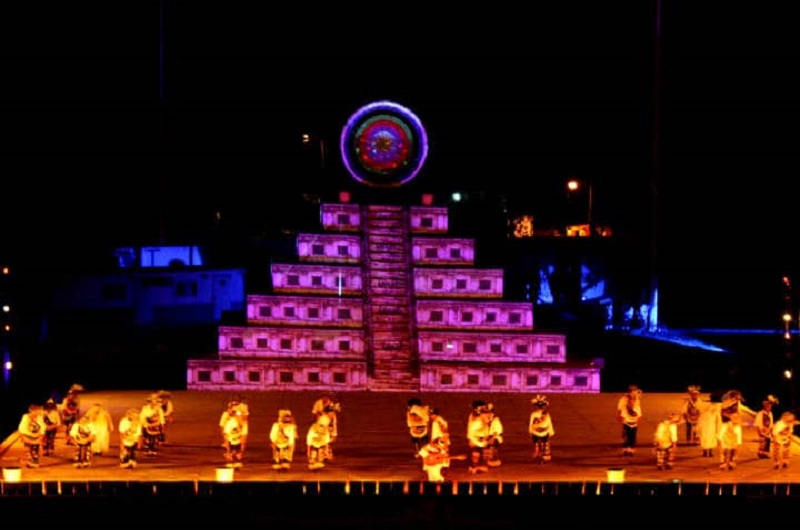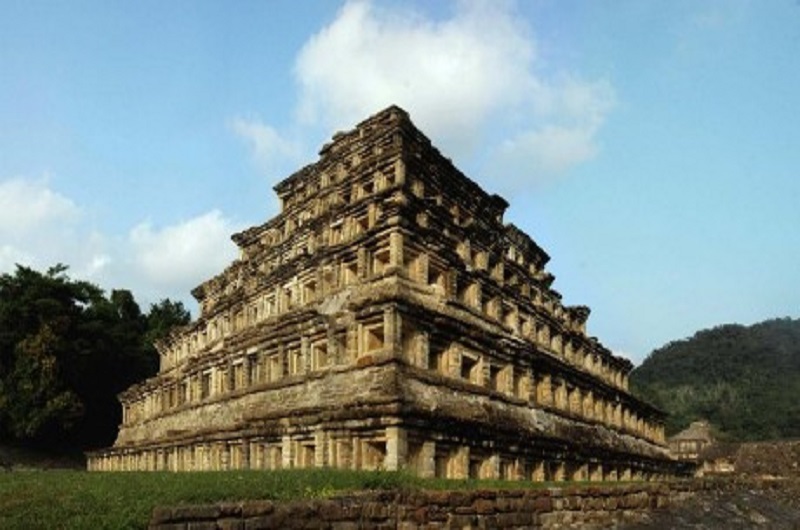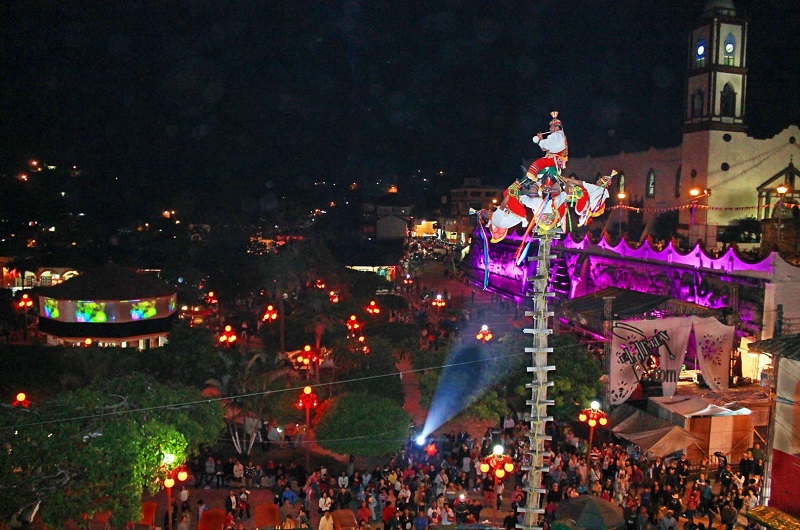Fascinating Papantla, Veracruz will delight you – Papantla, Veracruz
About 30 minutes by car from Poza Rica and about 270 kilometers from Xalapa, Papantla de Olarte is a charming corner that has produced two attractions that are a magnet for travelers from all over the world: Papantla's Vanilla and Los Voladores de Papantla (Papantla's Fliers)
Papantlas Vanilla, called Xanath by the "Totonacos", is the ripe fruit of an orchid native to this region (Vanilla planifolia), whose strong fragrance is highly valued in the kitchen as it enhances the flavor of desserts and cakes. Since 2009, the product has also been trademarked under the name Origin.
Fascinating Papantla, Veracruz will delight you – Papantla, Veracruz
Meanwhile, the colorful and risky dance of the Voladores de Papantla is an ancient rite related to the cycles of agriculture, declared an Intangible Cultural Heritage by UNESCO in 2009. During the dance, five handsomely dressed men climb to the top of a pole - becoming four birdmen who twist around the pole with a rope, while the "caporal" (foreman) stays on top beating his wooden drum and blowing a small reed flute.
Each flier spins around the pole 13 times, making a total of 52 revolutions - a sacred number, because every year 52 weeks pass and after that a new sun is born and also a solar cycle is completed every 52 years. Although today it is possible to enjoy this ritual in different parts of the country, nothing compares to celebrating it in the place where it was born.
In Papantla you can also see other colorful dances, like that of the "guaguas". They use huge circular cloths adorned with feathers to worship the sun and also the dance of the "negritos".On the other hand, those who come to Papantla in search of vanilla aroma and its colorful traditions must go back even further in history and visit the archaeological site of El Tajín, which is worth seeing, and its niches give a distinctive profile to the architectural structure.
Fascinating Papantla, Veracruz will delight you – Papantla, Veracruz
Each flier spins around the pole 13 times, making a total of 52 revolutions - a sacred number, because every year 52 weeks pass and after that a new sun is born and also a solar cycle is completed every 52 years. Although today it is possible to enjoy this ritual in different parts of the country, nothing compares to celebrating it in the place where it was born.
In Papantla you can also see other colorful dances, like that of the "guaguas". They use huge circular cloths adorned with feathers to worship the sun and also the dance of the "negritos".On the other hand, those who come to Papantla in search of vanilla aroma and its colorful traditions must go back even further in history and visit the archaeological site of El Tajín, which is worth seeing, and its niches give a distinctive profile to the architectural structure.
Here we have compiled some sightseeing activities
Fascinating Papantla, Veracruz will delight you Papantla, Veracruz
➢ Our recommendations are the historic center
The main square Papantla is a good place to start a tour, learn about the customs and beliefs of the inhabitants and enjoy an infectious festive atmosphere, especially on weekends .
Old photos show how this space, now occupied by tall trees and beautiful flower pots, was completely covered with vanilla beans to dry in the sun. The intense aroma of this practice had earned Papantla the nickname of "city that perfumes the world".The first thing you will notice around the main square is the Parroquia de Nuestra Señora de la Asunción from the 16th century, built by Franciscan monks on a small hill in a very simple style. In the courtyard of the church, bordered by fences, there is a 27 meter high pole on whichthe dance of the Voladores de Papantla is practiced and there isalso a space for other typical dances.
The dance of the Voladores de Papantla is performed on a pole, the caporal plays a drum and a flute to invoke the life-giving elements, the cardinal points and the union of the earth and the sun. The four flyers jump upside down at the waist and descend in a circle to ask the gods for fertility. It was declared an Intangible Cultural Heritage of Humanity by UNESCO in 2009
Fascinating Papantla, Veracruz will delight you – » The future of touring, is Habibi Word Travel & Tour
➢ Homenaje a la Cultura Totonaca (Homage to the Totonaca Culture)
On one of the exterior walls of the church is the high relief Homenaje a la Cultura Totonaca (Homage to the Totonaca Culture), created by artist Teodoro Cano.
➢ Construction of these streets in Pueblo Mágico (Magic City)
The layout of these streets in Pueblo Mágico (Magic City) is irregular . This favors capricious routes and the discovery of picturesque corners while passing between houses with red-tiled roofs. So it's a good i.
➢ Visit the colonial buildings and Asoleaderos
In addition, a view of some of the colonial mansions with their large courtyards, the "Asoleaderos" (sun decks) , where in the past the vanilla beans were dried.
Fascinating Papantla, Veracruz will delight you – Papantla, Veracruz
➢ Capilla de Cristo Rey (Chapel of Cristo Rey)
Very near the main square is the Capilla de Cristo Rey (Chapel of Cristo Rey), which is characterized by its Gothic style..
➢ Sculpture by Teodoro Cano
.
Finally, on the side of a mountain is another sculpture by Teodoro Cano, the Monumento al Volador (Monument to the Flying Man), from which you can enjoy abeautiful panoramic view of Papantla.
Fascinating Papantla, Veracruz will delight you – Papantla, Veracruz
➢ El Tajín - El Tajín Archaeological Site
The word "tajin" was translated as "thunder" or "great smoke", so this Mesoamerican religious and political center is often referred to as the "casa del trueno" (house of thunder).
The archaeological zone of El Tajín is only 10 kilometers from Papantla and was declared a World Heritage Site by UNESCO in 1992 because of its archaeological, cultural and historical importance. All travelers arriving in Papantla,
Fascinating Papantla, Veracruz will delight you – Papantla, Veracruz
➢ City of Totonaca
The city of Totonaca stretched between the basins of the Cazones and Tecolutla rivers, but the area that has been explored and recovered to date is about 10 hectares (more than 24 acres ), on which 40 buildings stand. In their heyday, they were covered with murals
➢ Pirámide de los Nichos (Pyramid of Niches)
The Pirámide de los Nichos cumbre-tajin-voladores-01 (Pyramid of Niches)is the most notable structure of the group and also the best studied, as it includes 365 niches, one for every day of the year.
Other important buildings are the Templo Azul (Blue Temple)with different characteristics from the rest of the complex,the buildings Las Columnas and Tajín Chico. An attention-grabbing fact is that17 juegos de pelota (ball courts)have been found there, the largest numberso far found in a single archaeological site.
Fascinating Papantla, Veracruz will delight you – Papantla, Veracruz
➢ The Tajín also has a Museo de Sitio (local museum)
The Tajín also has a Museo de Sitio (local museum) and next to the entrance the Voladores de Papantla perform their ritual dance every half hour. Put on comfortable shoes and sunscreen and explore the place! The place is really fascinating.
Painter and muralist Pepe Martínez was responsible for covering the walls of his hometown of Papantla with art, color and culture.
Totonaca customs and traditions, as well as a love of vanilla, are the themes that run through a dozen murals painted onpublic buildings, storefronts and restaurants for visitors to discover along the way.
Fascinating Papantla, Veracruz will delight you – Papantla, Veracruz
Workssuch as La abuela Totonaca (The Totonaca Grandmother) and En Pleno Vuelo (In Flight) form an interesting open-air art gallery that is constantly evolving.
The artist Pepe Martínez assures that through his work he tries to make visitors feel the atmosphere and the power of Totonaca culture."
➢ Museums
The museums and cultural centers of Papantla complement the information about the culture, traditions and history of this Pueblo Mágico, which far from being stuck in the past, continues to this day.
➢ Museo Teodoro Cano (Teodoro Cano Museum)
The Museo Teodoro Cano (Teodoro Cano Museum) is a tribute to the artist who founded the art workshops and was a student of Diego Rivera for more than 40 years. The facility contains, among other thingsa collection of paintings of different techniques, pre-Hispanic pieces, works by graduates of the workshop, documents and typical clothing.
Fascinating Papantla, Veracruz will delight you – Papantla, Veracruz
➢ Museo de las Máscaras (Museum of the Masks)
On the other hand, the Museo de las Máscaras (Museum of the Masks) in the municipality of San Pablo, a collection of about 300 pieces, both from Totonacas and from all over the state of Veracruz and the world. After that, you might be interested in visiting the Casa de la Cultura (House of Culture), where exhibitions are usually held.
Las Almas Tour and Travel will be happy to advise you with an offer, a tour of the magical cities.
You and Las Almas Tour and Travel will create an absolute dream vacation that is completely yours
Is adapted to wishes and interests.
Fascinating Papantla, Veracruz will delight you – Papantla, Veracruz
The Mágico Papantla
Tour Duration:
The price depends on your wishes, as well as hotel choice, visits. We therefore ask you to provide details when booking. So we can start putting together an offer for you.
Price: US Dollar $ request
per person
